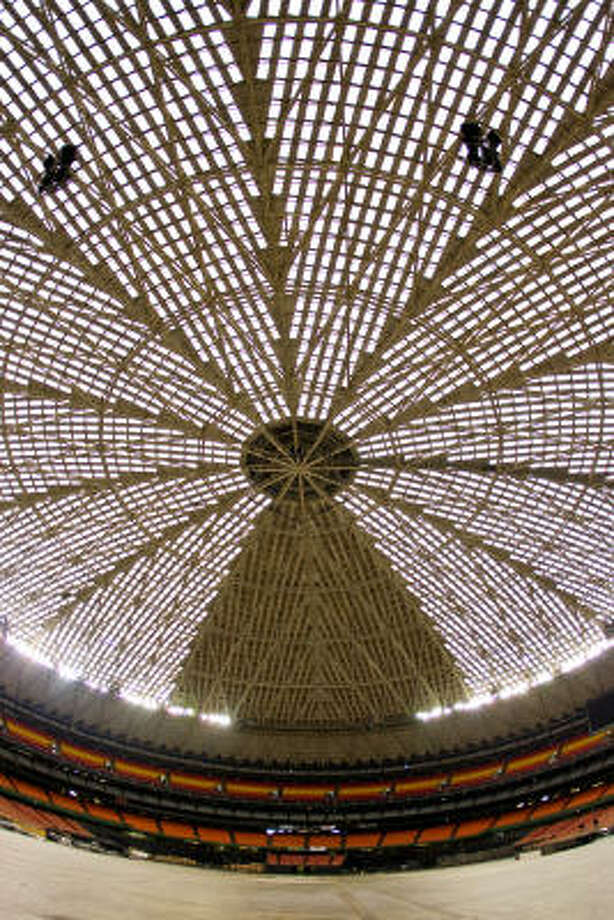Before 2000, Giants Stadium had that horrific old-style turf like in Philly’s Vet Stadium. Essentially thin carpet on top of concrete. “Turf Burn” was a particularly gross-looking consequence for many of the players.
So they switched to natural grass and everyone hailed it as infinitely better. But then as the season progressed, and into the next couple seasons, it became abundantly clear that “grass” was not a thing that could survive two teams playing there during a typical northeast fall/winter. (Or a single concert, but I think maybe they took the grass out for concerts? How would that work? I would remember that, I would think, as I went to both a Jets game and concert at Giants stadium during those three years. My memory isn’t what it used to be, though.)
But at that point, FieldTurf was the exciting new innovation in artificial turn. It’s not just carpet on concrete, but actually sort of absorbs some of the impact like grass and dirt do. And see those pellets spray up as the receiver drags his foot? That helps with the cushioning and helps keep the “blades” standing up like grass. No more turf burn, it’s vastly superior to the old turf, and offers a superior playing experience to shitty grass. Not as good as pristine grass, but nothing is.
MetLife Stadium’s grass option is “shitty grass.” If ever a NY team should miracle its way into a home playoff game, the best it could hope for is the clumpy, uneven mess similar seen during the 2000 NFC Championship Game at Giants Stadium:
On the plus side, there’s actually grass on the field; it’s not dirt painted green. On the downside, looking through a few of those plays at the normal camera angle, I think green-painted dirt might actually be better. I’d definitely prefer FieldTurf to that grass.
This pretty much sums up the thought process on why they went with Field Turf in the new stadium. They would have continued to pay the millions per year (I seem to remember hearing $7 million per year, but ownership was super excited to bring grass in) to maintain a grass field if it could be maintained, but in practice it turned out that it really couldn’t.
Too many football teams, too many concerts, too many MLS soccer games, too many events in general. Natural grass isn’t really an option. The “new” (at the time) FieldTurf seemed like a miracle cure.
Is there a new better artificial turn now? Is it a question of MetLife being accused of using old-style turf? Grass isn’t really an option; which turf should they put in? The kind they already have?


